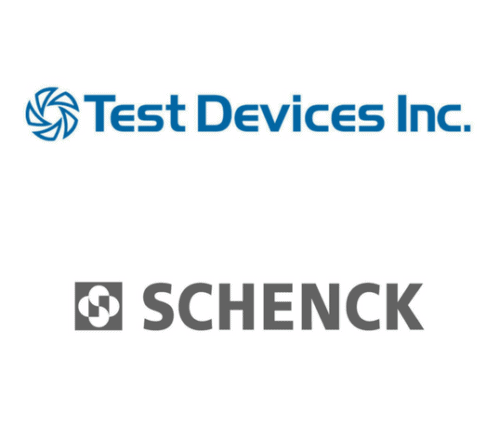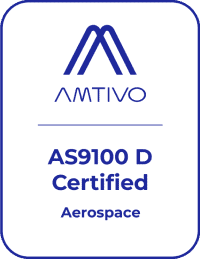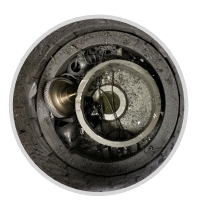Low Cycle Fatigue Rigs vs. Dynamic Spin Rigs
To validate the integrity of rotating parts against centrifugally loaded conditions, spin testing is a critical step to ensure rotor product quality. While the principle of the spin testing appears straightforward, it’s very easy to miss the important subtleties of the testing mechanics. In fact, since the early days of the spin testing, millions of dollars have been wasted and many perfectly good parts have been needlessly destroyed due to subpar testing practices.
Successful spin testing requires participants to:
- Focus on the overall test objective – Which rotor features will the test assess, and under what conditions?
- Understand the test part – How is the test part being assembled in relation to adjoined parts in the actual operating environment? How will it interact with those related components, how will those interactions mechanically or structurally constrain the test part while under assessment, and how is the spin tooling designed to accurately represent the condition?
- Recognize what to test for and what results will indicate – What measurements must be taken? How should these measurements be captured so that the resulting data is useful in understanding the failure mode, validating the engineering models, and updating the part design accordingly?
Beyond the basics, spin testing can also be used to validate the durability of the rotors in more a realistic environment. Doing fatigue assessment in spin testing allows engineers to study part durability by using actual production parts (or modified versions), which would be more representative test specimens than coupons in terms of geometry, size and manufacturing process. Additionally, the loading condition resulting from the spinning would create realistic stress conditions, specifically related to the multi-axial loading field and the loading cycle.
Test Devices, Inc. (TDI) and Schenck offer two different types of spin rigs for advanced fatigue assessment tests: a Low Cycle Fatigue Rig (LCF) and a Dynamic Spin Rig (DSR). Each style of rig is designed to accommodate specific testing requirements.
- Low Cycle Fatigue Rigs are designed to perform various low cycle fatigue (LCF) tests, which are typically used to evaluate the overall durability of parts in terms of usage or operational cycles. For example, for a jet engine for a commercial airliner, this would be based on the number takeoff and landing cycles for a specified flight path.
- Dynamic Spin Rigs, on the other hand, are designed to test the dynamic properties of the rotor parts and its high cycle fatigue (HCF) related failure modes. The HCF is a fatigue failure mode driven by the resonance of a part; for example, turbine blades may have resonances within an operating speed range that have modeshapes tied to incipient and rapid fatigue damages/failures.
Low Cycle Fatigue (LCF) Rigs for Dependable and Realistic Testing

Combined with various automated testing features, Test Devices’ LCF rigs boast the highest-productivity drive systems available. These rigs typically incorporate a range of standard features, including:
- Custom data acquisition system to record all test data
- TDI’s proprietary crack detection system technology
- Containment chamber designed to withstand high-energy burst failures
- Vacuum system to eliminate aerodynamic losses and friction heat
- Automated control system to perform various LCF test speed profiles
- High performance drive systems with RPM capabilities of up to 250,000 rpm
In addition to these features, LCF rigs can also be equipped with elevated temperature test capabilities, such as:
- Isothermal – Uniform temperature on the test rotor
- Thermal gradient – Capability to map the realistic “engine-like” rim-to-the bore temperature profile on the rotor
Dynamic Spin Rig (DSR) for Advanced Turbine System Research
High cycle fatigue (HCF) failure typically occurs during the critical phase of an aircraft’s operations, such as during the take-off for commercial airliners or rapid throttle changes in military aircraft. While the duration of an HCF-inducing condition exposure could be brief, the damage often develops rapidly before reaching a critical level. In most cases, there is no opportunity for correction once the condition reaches this point.
DSR was developed to allow engineers to test and validate the dynamic property of bladed rotors at the component level, therefore minimizing test costs while still retaining the realism in the test. DSR are equipped with the capability to excite the bladed rotor with a desired dynamic load (of an Engine Orders, or EOs). The spin testing condition incorporates the effect of the centrifugal load on the test parts, which is known to affect its damping and resonance properties – this unique test element cannot be accurately replicated by traditional table-top methods.
Test Device’s DSRs are equipped with unique testing capabilities, which include but are not limited to:
- Proprietary high-precision tachometer & the rpm control system to “lock on” to the target resonances
- Oil-jet and aero-pulse blade excitation systems
- Multi-point strain gage & slip ring (or telemetry) systems
- No-contact Stress Measurement System (NSMS), which is also known as the Blade Tip Timing system
Testing Rigs from Test Devices
With years of experience working with cutting-edge spin test rigs, Test Devices, Inc. is proud to provide testing services utilizing both low cycle fatigue and dynamic spin rigs to customers. To learn more about our LCF and DSR spin rigs, or to discuss options for your specific application, request a quote from the team today.



